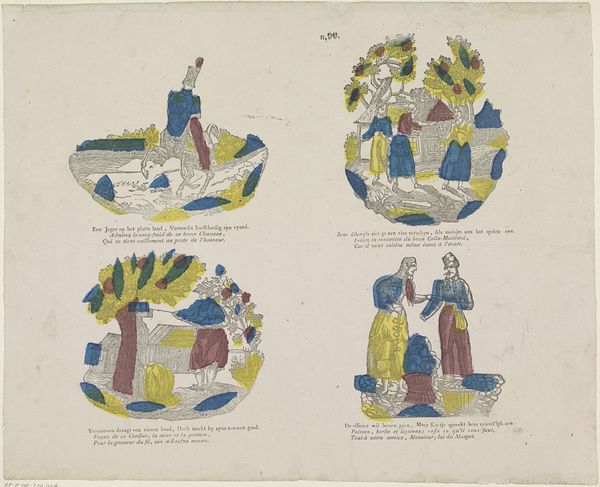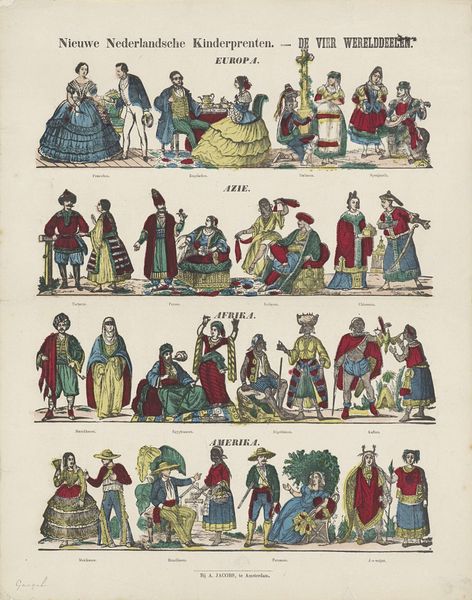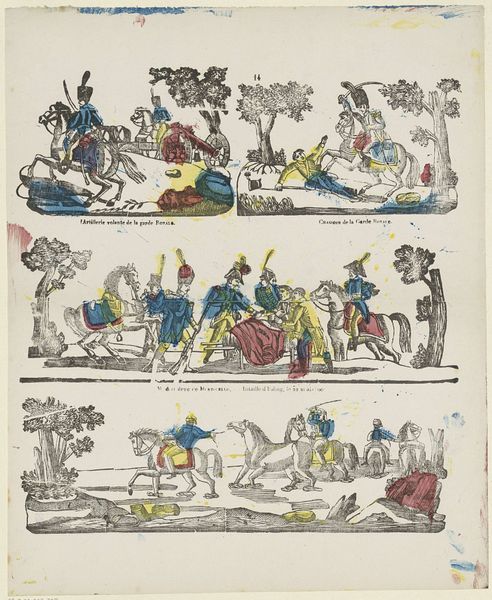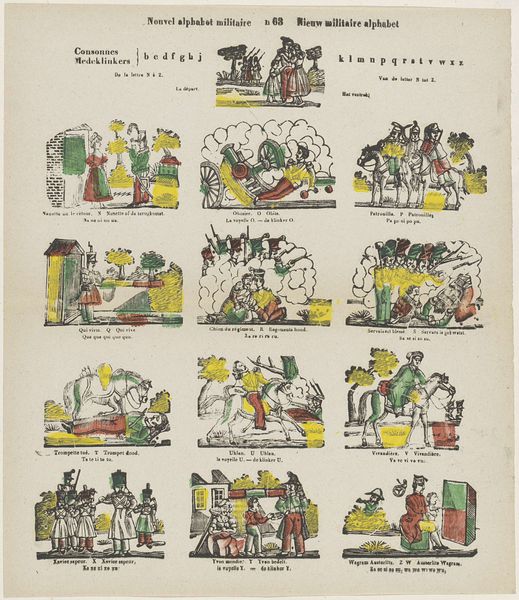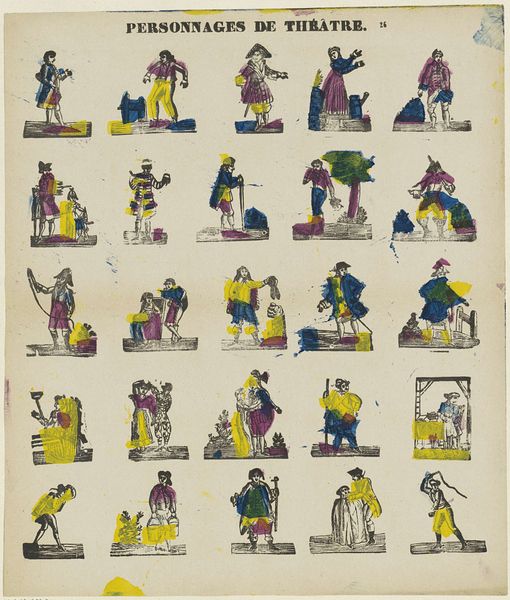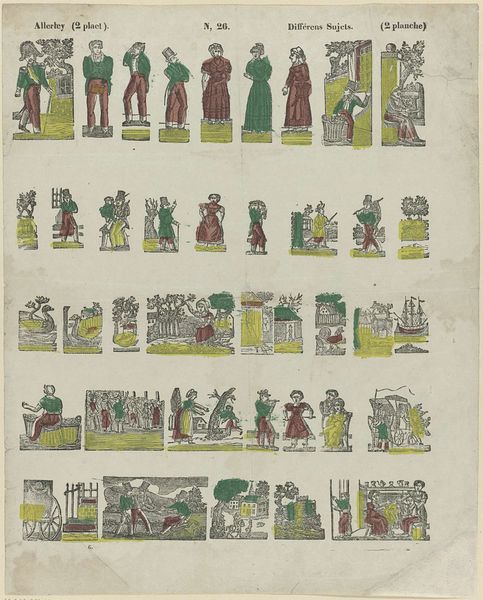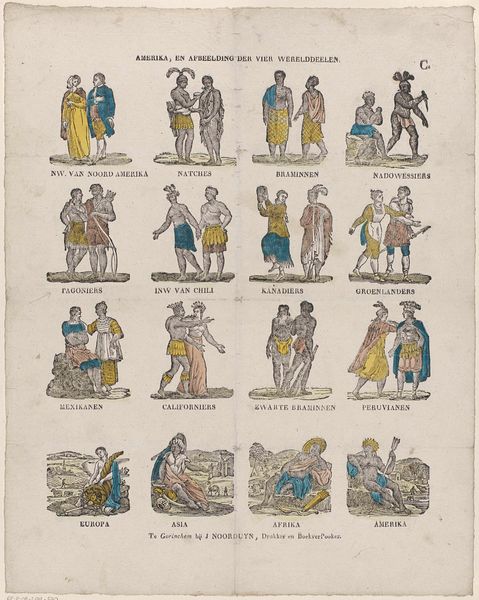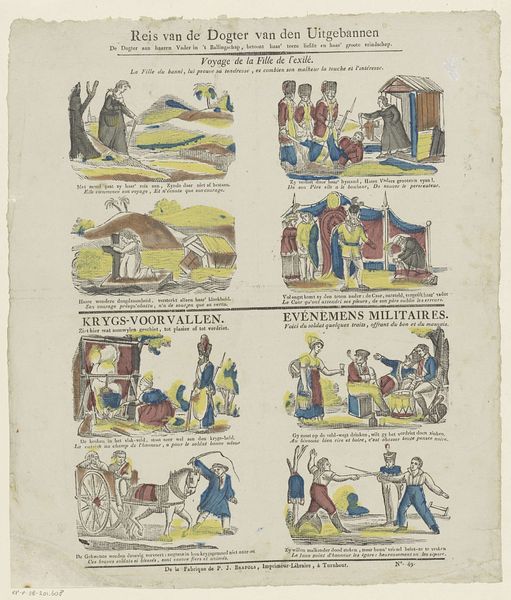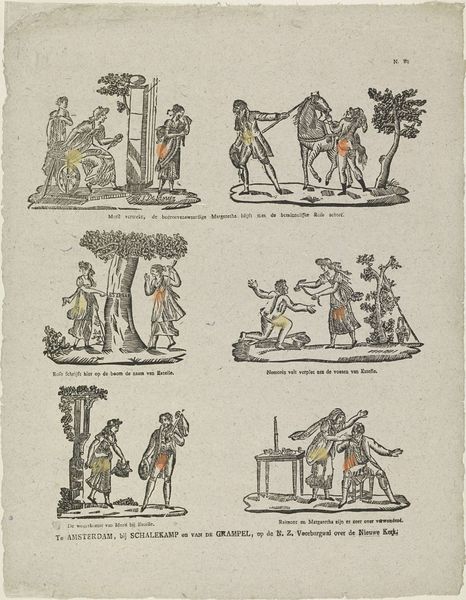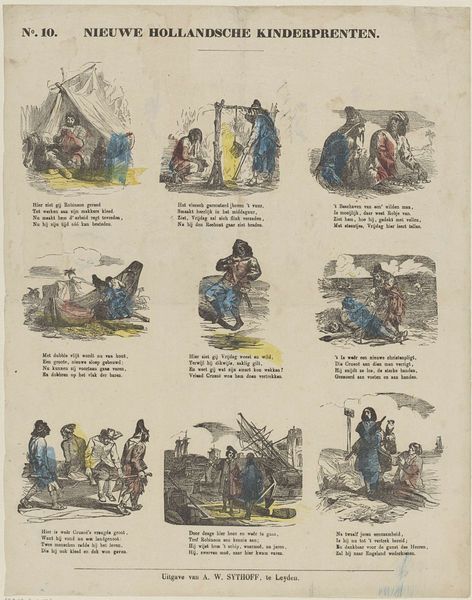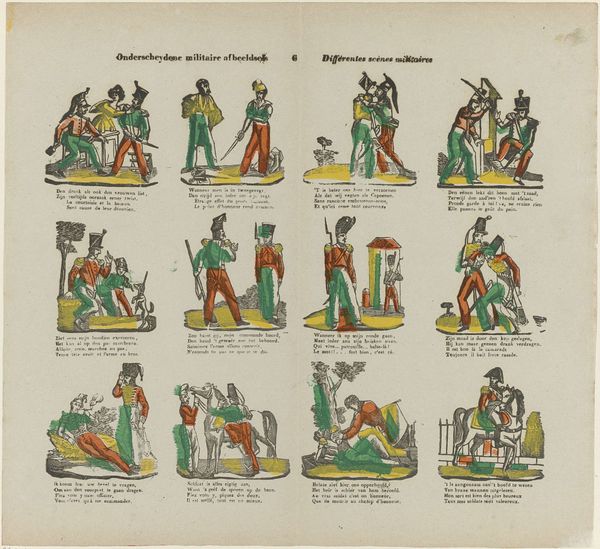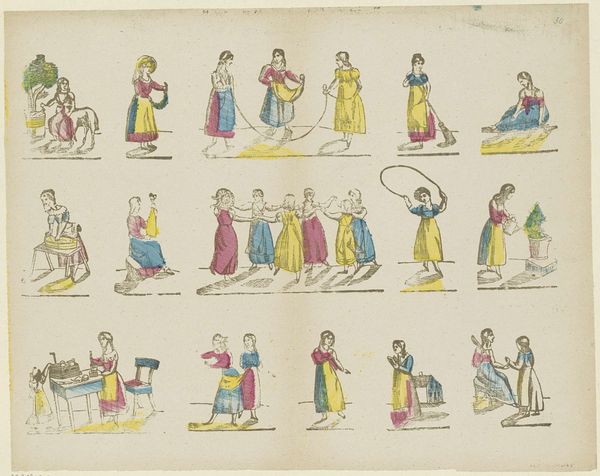
Dimensions: height 365 mm, width 348 mm
Copyright: Rijks Museum: Open Domain
Curator: Here we have "Don Quichot," a print by M. Hemeleers-van Houter dating from between 1827 and 1894, part of the Rijksmuseum collection. It appears to be a lithograph with some added ink work. Editor: My first thought is it feels almost like a comic strip, or maybe illustrations from a children's book. The colors are quite faded, but the scenes are distinct, and I can trace the narrative. It has this appealing handmade quality, rough and charming. Curator: Yes, it reminds us of the tradition of folk art prints, especially popular in the 19th century. Prints allowed for broader distribution of narratives, reinforcing shared cultural stories, such as the famous story of Don Quixote, originally a critique of the Spanish Golden Age, of chivalric novels and idealized romanticism. Editor: Considering the medium, I think this speaks to that accessibility. Lithography was relatively inexpensive, making it ideal for mass production and distribution, connecting Don Quixote’s tale of idealism and disillusionment to a broader public, not just the wealthy elite, but is printed on paper, with lines and ink – which materials are crucial in translating literary concepts into a readily consumable format? Curator: Absolutely. The print medium, with its relative affordability, made complex stories more widely accessible, serving as a key medium to help shape a collective cultural identity. The choice of depicting Don Quixote in this form speaks to a conscious decision to popularize high culture for a wider audience, even if diluted or re-interpreted. Editor: The individual panels, though crudely rendered, do capture some of the essential elements. Look at Don Quixote's thin figure and determined posture - how does it represent Quixote in different situations: knightly endeavors and then bedridden with fever toward the end? What decisions underpinned the maker’s choices about which scenes to illustrate and why? Curator: Well, these prints would circulate in various settings—homes, fairs, even the streets. The narrative selection likely had to do with scenes that were both visually engaging and easily understood, conveying core elements of Don Quixote’s story to an audience with varied levels of literacy. The museum displays show art as an intellectual asset but can forget the labor and time and context in which these were distributed in wider public life. Editor: This piece serves as a reminder of how art adapts and reflects societal values. This seemingly simple lithograph touches upon accessibility and mass cultural dissemination. Curator: It underscores how visual culture has shaped and reshaped our collective understanding of classic tales like Don Quixote.
Comments
No comments
Be the first to comment and join the conversation on the ultimate creative platform.
